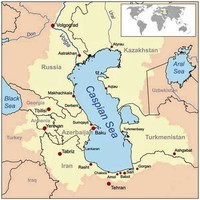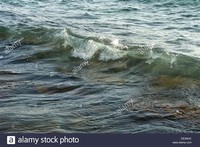Facts about Caspian Sea

In 2003, Russia, Kazakhstan and Azerbaijan reached an agreement concerning their sectors, which covers 64 percent of the Caspian Sea.

Four-fifths of the world’s catch of sturgeon, which yield eggs that are processed into caviar, come from the Caspian Sea.

The Caspian Sea (Russian: Kaspiyskoye More; Persian: Daryaye Khezer) is a landlocked endorheic (having no natural outflow except evaporation) sea between Asia and Europe.

Exploitation of large oil and natural gas reservoirs under the Caspian Sea began in the 1920s, and expanded after World War II, making the area a focus of international politics.

The Caspian Sea lies east of the Caucasus Mountains and dominates the flat expanses of western Central Asia.

The Caspian seal (Phoca caspica, Pusa caspica in some sources), one of very few seal species living in inland waters, is endemic to the Caspian Sea.

The narrow, elongated basin of the Caspian Sea extends for almost 750 miles (1,200 kilometers) from north to south, with an average width of only 200 miles (320 kilometers).

There as many as fifty islands in the Caspian sea, most of them small.

The Volga River (about 80 percent of the inflow) and the Ural River discharge into the Caspian Sea, but it is endorheic; there is no natural outflow (other than by evaporation).

The Caspian Sea is bordered by five countries, Iran, Russia, Azerbaijan, Turkmenistan, and Kazakhstan.

Over the centuries, Caspian Sea levels have changed in synchronicity with the estimated discharge of the Volga, which in turn depends on rainfall levels in its vast catchment basin.
